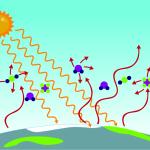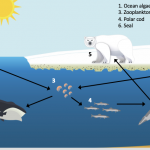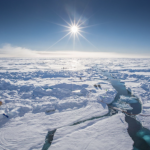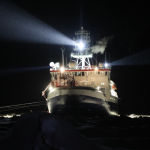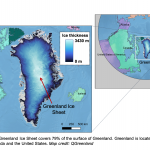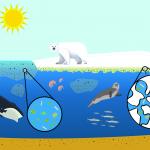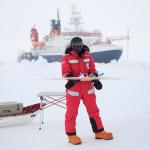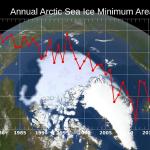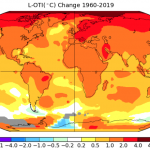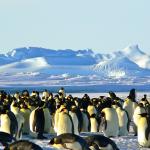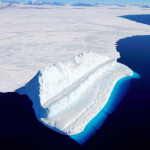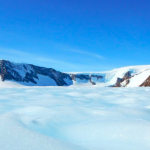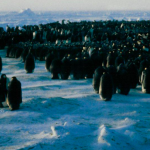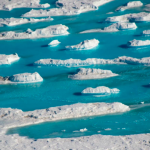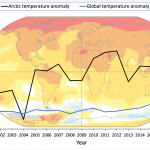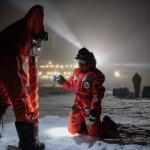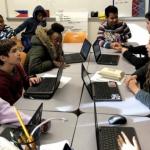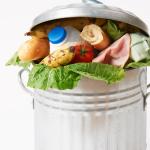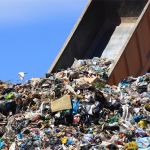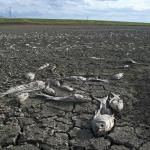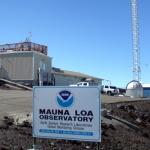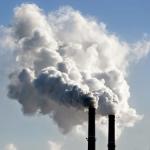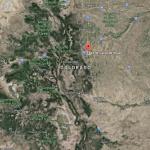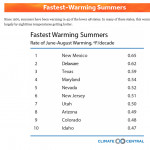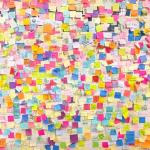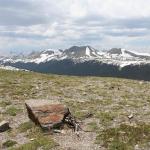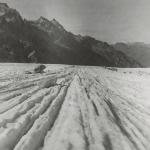Lesson Plans & Activities
Data Puzzle: Not All Warming is Equal
This data puzzle is a stand-alone lesson that is part of a larger collection of data puzzles.
The dramatic increase in atmospheric carbon dioxide has caused global temperatures to rise by more than 1.1°C (~2°F), but not all warming is equal. In this Data Puzzle, students analyze temperature and atmospheric carbon dioxide datasets to construct explanatory models for the following question, "Do the places on Earth where temperatures are increasing the most also have the greatest increases in atmospheric carbon dioxide?" ,
, Data Puzzle: Tracing Carbon Through the Arctic Food Web
This data puzzle is a stand-alone lesson that is part of a larger collection of data puzzles.
The Arctic is home to a huge variety of living things (humans included) that have adapted to harsh conditions. However, these conditions are changing as Arctic temperatures rise and sea ice declines. In this Data Puzzle, students trace the flow of carbon through the Arctic food web to construct explanatory models for the following question, "How might the decline in sea ice affect Arctic organisms large and small?"

Sea Ice, The Character
Sea Ice, The Character is one of four activities in the The Drifting North Polar Planetarium Experience that invites students to explore what it was like to participate in the MOSAiC expedition to the North Pole.
In this activity, student's will compare and contrast the different structures of freshwater ice and seawater ice with a hands-on lab. Learning about what makes sea ice so unique in the Arctic will be guided by the driving questions: How does saltwater sea ice differ from freshwater ice? What is sea ice like in the Arctic? and Why is sea ice important in the Arctic?Seasons and Light in the Arctic
Seasons and Light in the Arctic is one of four activities in the The Drifting North Polar Planetarium Experience that invites students to explore what it was like to participate in the MOSAiC expedition to the North Pole.
In this activity, student's will explore why we have seasons and changing daylight throughout the year by graphing different daylight hours around the world. Learning will be guided with the driving question: How do we understand the Arctic light and seasons?Data Puzzle: Balancing Act
This data puzzle is a stand-alone lesson that is part of a larger collection of data puzzles.
Since the early 2000s, the Greenland Ice Sheet’s mass balance has been consistently negative, meaning more mass is being lost than gained. But this change in mass balance hasn’t always happened at the same rate. What could account for observed changes to the amount of ice in the Greenland Ice Sheet in recent decades? ,
, 
A Changing Arctic Ecosystem
This storyline unit consists of 8 lessons, each tied to NGSS life science standards
The Arctic is warming more rapidly than anywhere else on Earth. One consequence of a warming Arctic is a dramatic decline in sea ice, an important habitat for many Arctic plants and animals. In this unit students will engage with 360° virtual reality tours, hands-on labs, and authentic Arctic datasets as they gather evidence to construct explanatory models for the unit driving question, "How might the decline in sea ice affect Arctic organisms large and small?"Data Puzzle: It's All Connected
This data puzzle is a stand-alone lesson that is part of a larger collection of data puzzles.
What makes the Arctic climate system so unique is the sea ice, which influences the Arctic climate in many ways. In this Data Puzzle, students analyze authentic Arctic data to construct explanatory models for the following question, "What effect, if any, do leads (cracks in the sea ice) have on the transfer of moisture between the Arctic Ocean and atmosphere?" ,
, Data Puzzle: To Reflect or Not to Reflect
This data puzzle is a stand-alone lesson that is part of a larger collection of data puzzles.
The color of Earth's surface determines how much of the Sun's energy is reflected or absorbed, where lighter-colored surfaces are more reflective (higher albedo). In this Data Puzzle, students analyze authentic Arctic data to construct explanatory models for the following question, "How might the Arctic’s albedo be affected by the observed decline in sea ice?" ,
, Data Puzzle: On a Budget
This data puzzle is a stand-alone lesson that is part of a larger collection of data puzzles.
The Arctic is currently warming at a rate faster than the global average, a phenomenon known as Arctic amplification. In this Data Puzzle, students analyze authentic Arctic datasets to construct explanatory models for the following question, "Why might the Arctic be warming faster than other places on Earth?" ,
, Antarctica: Connecting Climate Change, Melting Ice Shelves, and Pooping Penguins
This is a five-part curriculum about Antarctic environmental processes and building connections between ice shelves, surface melt, climate change - and penguins!
This is a five-part curriculum about Antarctic environmental processes and building connections between ice shelves, surface melt, climate change - and penguins!Human Impacts on Climate Change: What will happen and what can we do about it?
This is the fifth lesson of a five-part curriculum about Antarctic physical environments and ecosystems.
In this lesson, students explore how human activities will continue to impact Antarctic ice, discuss human contributions to climate change, and investigate what we can do to stop/reverse these negative effects.Why does the ice melt on the “Frozen Continent”?
This is the fourth lesson of a five-part curriculum about Antarctic physical environments and ecosystems.
After exploring albedo in the previous lesson, this lesson expands on more factors that lead to surface ice melt in Antarctica.Antarctic Life & Albedo
This is the third lesson of a five-part curriculum about Antarctic physical environments and ecosystems.
In this lesson, students explore the importance of albedo (or reflectivity) to penguins and the surfaces they inhabit and learn how penguin colonies may be mapped using satellites.What do we already know, or think we know, about climate & Antarctica?
This is the first lesson of a five-part curriculum about Antarctic physical environments and ecosystems.
In this lesson, students will elicit initial ideas about climate, explore images of Antarctica, learn important vocabulary, and synthesize how satellite imagery can help us understand climate change in Antarctica.Arctic Feedbacks: Not All Warming Is Equal
This storyline unit consists of 10 lessons, each tied to NGSS Earth's systems standards
In this MS/HS unit, students engage with 360° virtual field trips, authentic Arctic datasets, and app-based labs to construct models and explanations for the unit driving question, "Why might the Arctic be warming four times as fast as the rest of the world?"Exploring the New and Old Arctic
This unit consists of 6 lessons, each tied to NGSS nature of science understandings
In this MS/HS unit, students compare and contrast Arctic expeditions of the past (1893-1896 Fram expedition) and the present (2019-2020 MOSAiC expedition) to prepare for the Arctic of the future.How Can We Present Solutions for Food Waste and Emissions at School?
This is the fifth lesson in the Climate Resiliency Education Design Challenge Unit which is meant to follow the middle or high school Climate Resiliency Education units.
This lesson provides guidance for students to create and practice a presentation about their design challenge results that they developed in the previous lessons and how to present it to the school administration.How Can We Reduce Emissions Associated with Food Waste in Our School?
This is the fourth lesson in the Climate Resiliency Education Design Challenge Unit which is meant to follow the middle or high school Climate Resiliency Education units.
In this activity students utilize the data that is collected and propose solutions to mitigate food waste in their school.How Can We Understand Waste and Emissions in Our School's Food System?
This is the third lesson in the Climate Resiliency Education Design Challenge Unit which is meant to follow the middle or high school Climate Resiliency Education units.
This lesson outlines for students how to design and carry out an investigation to audit their school’s food waste system.How Does Our School Food System Create Greenhouse Gas Emissions?
This is the second lesson in the Climate Resiliency Education Design Challenge Unit which is meant to follow the middle or high school Climate Resiliency Education units.
In this design challenge lesson, students examine their school food system and develop an investigation about food waste in order to know what should change.How Can We Decrease Our Impact on the Earth’s Climate at our School?
This is the first lesson in the Climate Resiliency Education Design Challenge Unit which was designed to follow the middle or high school Climate Resiliency Education units.
In this design challenge lesson students explore the Denver Public School District’s solid waste plan and discuss how their school can save or decrease emissions by reducing solid waste at our school.What Impact do Increasing Greenhouse Gases Have?
This is the sixth and final lesson in the Climate Resiliency Education High School Climate Unit.
In this lesson, students utilize case studies to learn about the ways climate change is currently impacting people and other living things around the world.Is it Normal That World Temperatures Are Rising This Fast?
This is the fifth lesson in the Climate Resiliency Education High School Climate Unit.
This lesson explores if it is normal that world temperatures are rising at the currently observed fast pace.How Do Humans Contribute to the Increase in Global Temperatures?
This is the fourth lesson in the Climate Resiliency Education High School Climate Unit.
Students explore the greenhouse effect in this lesson using a computer simulation and develop a model for how it works.Why Are Cities and Other Regions of the World Getting Hotter?
This is the third lesson in the Climate Resiliency Education High School Climate Unit.
This lesson has students investigate how albedo is contributing to temperature increasing in some places, like cities, are increasing at faster rates than elsewhere.What is Special About Cities Compared to Rural Places?
This is the second lesson in the Climate Resiliency Education High School Climate Unit.
This lesson explores climate data at local, national, and global levels to determine that temperatures are changing all over the world, and that there are certain locations where temperatures are warming faster than the global average.Why Are Cities Getting Hotter?
This is the first lesson in the Climate Resiliency Education High School Climate Unit.
During this lesson, students explore the increase in summer temperatures and describe the pattern as it relates to Colorado using a video by the Denver Post.Arctic Climate Connections
The Broader Impacts portion of the NSF proposal studies the analysis of existing data from Arctic terrestrial stations with multi-year measurements of the surface energy budget, clouds, soil temperature profiles, and basic meteorological measurements.Exploring the Arctic
This is the first activity of a three-part curriculum about Arctic climate; the activities may be used independently or in sequence.
This activity introduces students to the Arctic and Arctic climate. Through a virtual exploration of the geography of the Arctic students become familiar with the region. They are then introduced to meteorological parameters that Arctic research teams use.Exploring Arctic Climate Data
This is the third activity of a three-part curriculum about Arctic climate; the activities may be used independently or in sequence.
In this final activity, students use authentic Arctic climate data to explore albedo and its relationship to seasonal snowmelt as a self-reinforcing feedback mechanism, which is then applied to large scale global climate change.Do you really want to visit the Arctic?
This is the second activity of a three-part curriculum about Arctic climate; the activities may be used independently or in sequence.
This jigsaw activity introduces students with Arctic weather data using a role-playing activity that has students read and interpret graphs while considering the optimal time to plan a research mission to the Arctic.